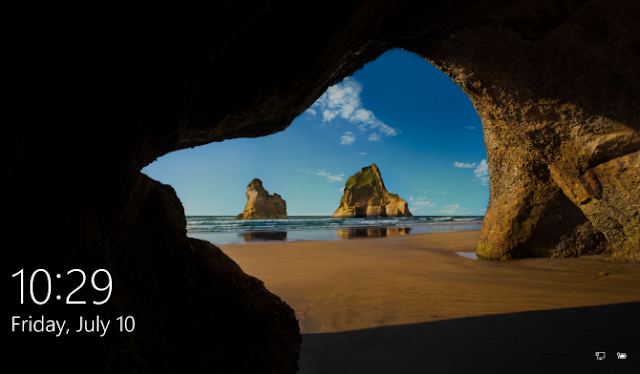 |
| How to Disable the Lock Screen in Windows 10 |
Every time your computer boots or wakes from sleep, you have to click
your mouse button or swipe up to make the lockscreen disappear before
you get hit with a login prompt.
You can save time and a click by disabling the lock screen and going straight to the login screen in Windows 10. Here's how.
1) Open the registry editor. Hit CTRL + R, then type regedit into the prompt and hit Enter. Click Yes if you receive a warning from User Account Control.

2) Navigate to HKEY_LOCAL_MACHINE\SOFTWARE\Policies\Microsoft\Windows by opening the various folders in the tree.

3) Create a new registry key called Personalization if one doesn't already exist. To create the key, right click in the right pane, select Key from the menu and then rename the key to "Personalization."

4) Navigate the Personalization key.
5) Right click in the right pane and select New then DWORD (32-bit) Value.

6) Name the new value "NoLockScreen" (without quotes).

7) Set NoLockScreen to 1 by double clicking on its name, entering a "1" in the Value data field and hitting OK.
After your next reboot, the lock screen will be gone. If you want to re-enable it, just change the registry setting from 1 to 0.
 |
| How to Disable the Lock Screen in Windows 10 |
Every time your computer boots or wakes from sleep, you have to click
your mouse button or swipe up to make the lockscreen disappear before
you get hit with a login prompt.
You can save time and a click by disabling the lock screen and going straight to the login screen in Windows 10. Here's how.
1) Open the registry editor. Hit CTRL + R, then type regedit into the prompt and hit Enter. Click Yes if you receive a warning from User Account Control.

2) Navigate to HKEY_LOCAL_MACHINE\SOFTWARE\Policies\Microsoft\Windows by opening the various folders in the tree.

3) Create a new registry key called Personalization if one doesn't already exist. To create the key, right click in the right pane, select Key from the menu and then rename the key to "Personalization."

4) Navigate the Personalization key.
5) Right click in the right pane and select New then DWORD (32-bit) Value.

6) Name the new value "NoLockScreen" (without quotes).

7) Set NoLockScreen to 1 by double clicking on its name, entering a "1" in the Value data field and hitting OK.
After your next reboot, the lock screen will be gone. If you want to re-enable it, just change the registry setting from 1 to 0.
How to Disable the Lock Screen in Windows 10
 Reviewed by impart4you
on
July 17, 2016
Rating:
Reviewed by impart4you
on
July 17, 2016
Rating:
 Reviewed by impart4you
on
July 17, 2016
Rating:
Reviewed by impart4you
on
July 17, 2016
Rating:








No comments: